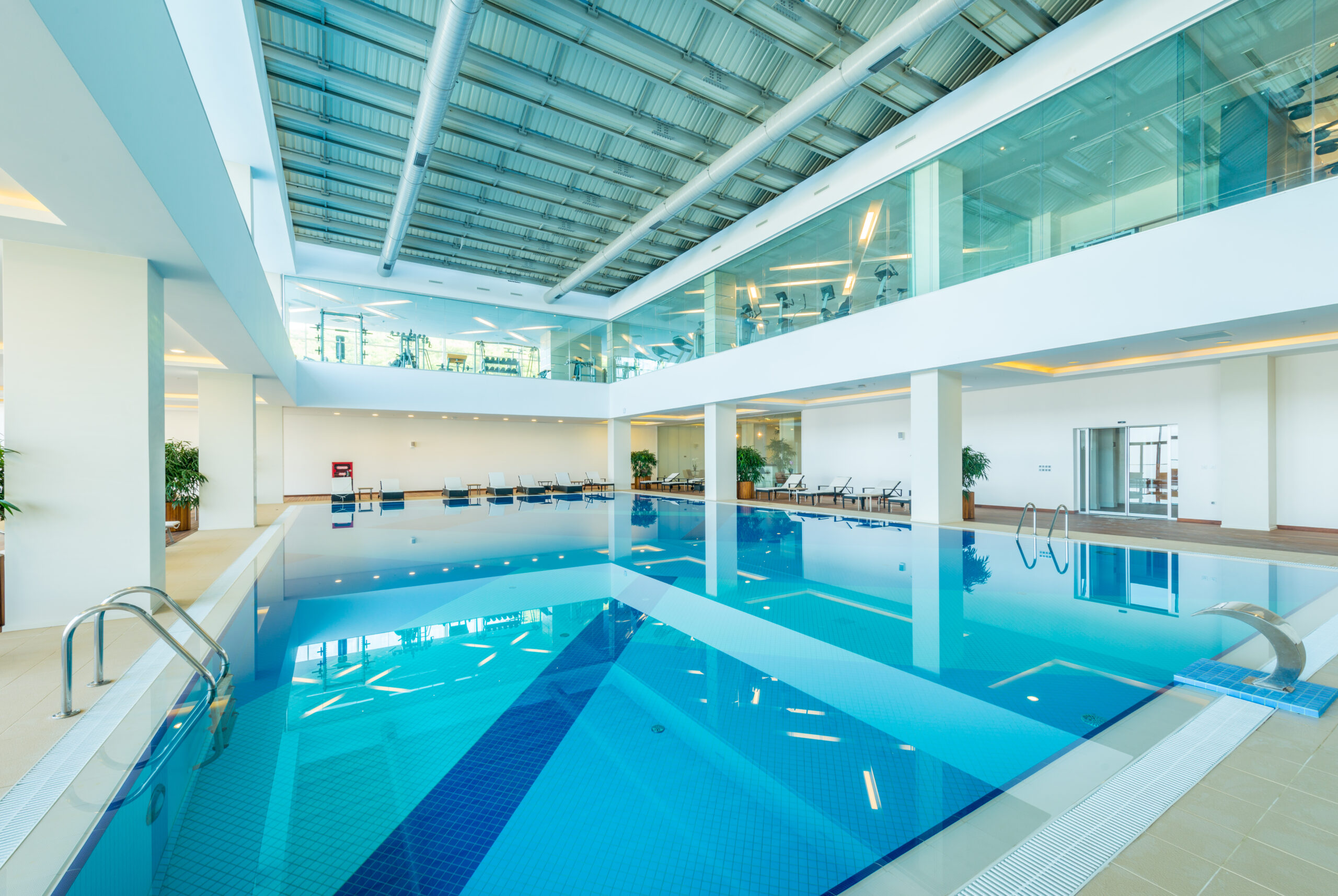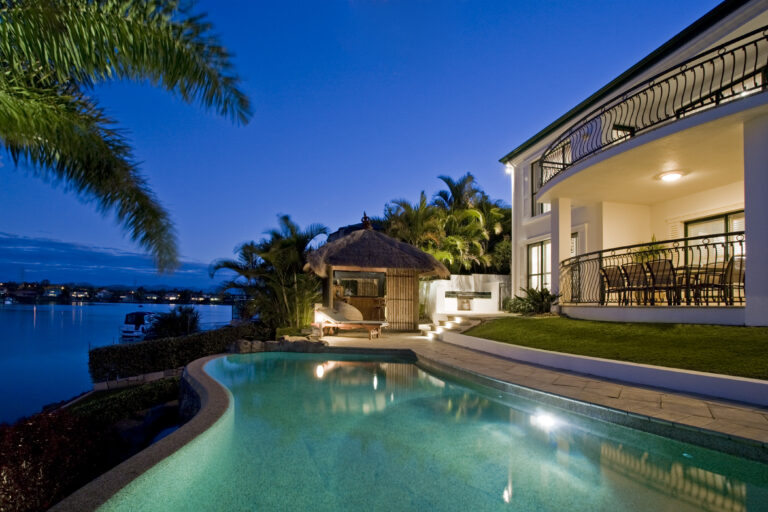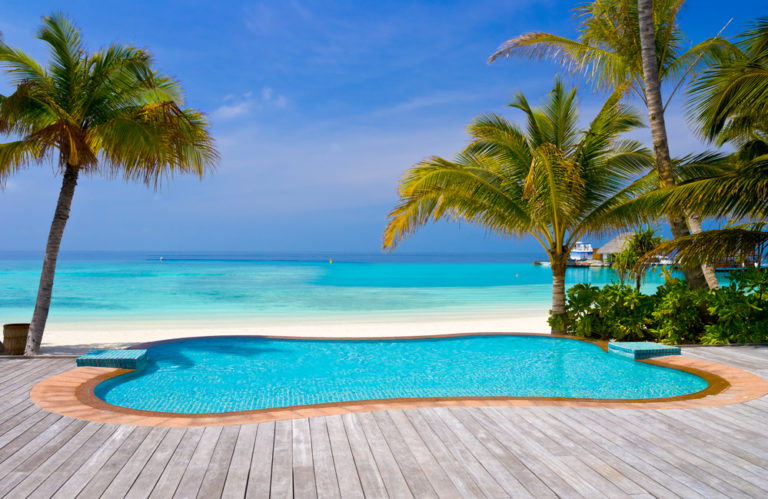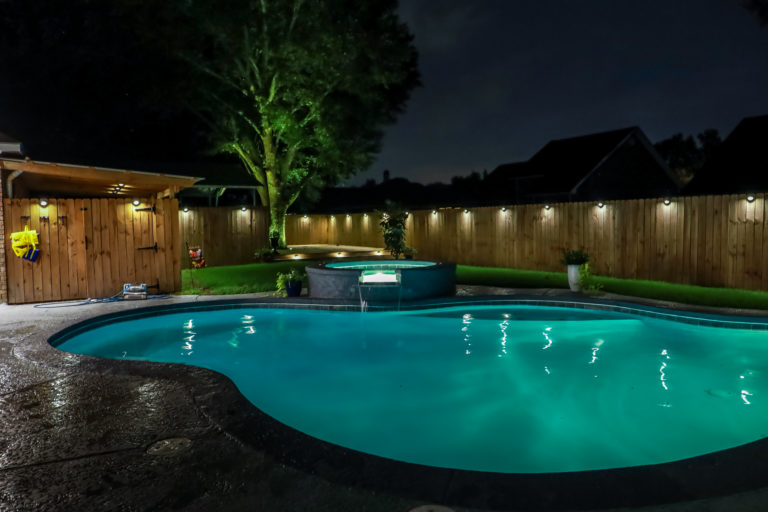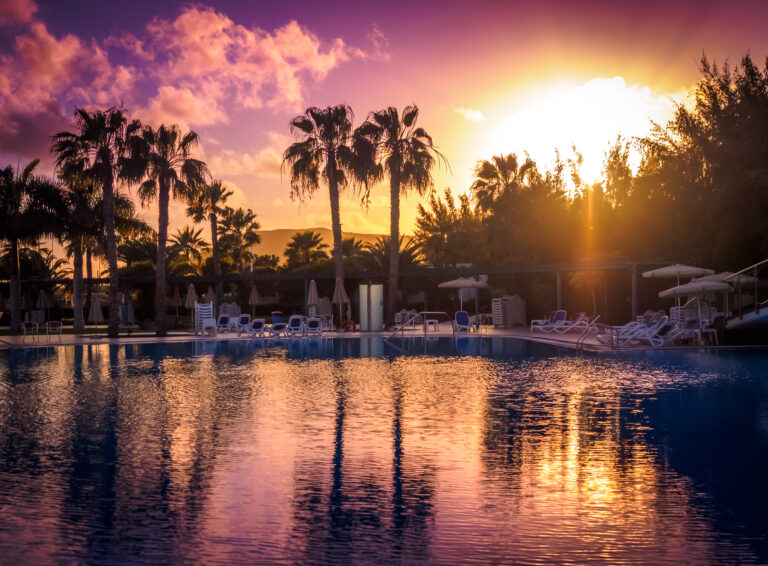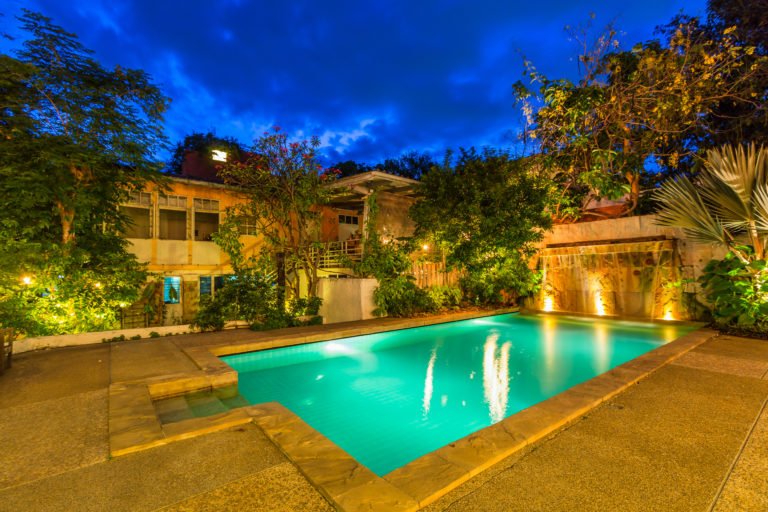Mastering Acoustics The Sound of Water in Pool Design
You’re about to dive into the world of pool acoustics, where water’s whisper becomes an art form. You’ll understand the basics, grasp how pool shape and material choices affect sound, and learn techniques to control noise.
We’ve even included a case study on luxury pool design for you. Ready to make waves in your understanding of soundscapes? Let’s plunge into ‘Mastering Acoustics: The Sound of Water in Pool Design’.
Understanding the Basics of Acoustics in Pool Design
Understanding the basics of acoustics in pool design isn’t just about aesthetics; it’s also crucial for creating a relaxing environment. The science behind this is known as Acoustic Physics – the study of sound and how it behaves in different environments. You might not realize it, but sound reflection plays a significant role here.
Just imagine lounging by your pool on a sunny afternoon. What you’re hearing-the serene ripple of water-isn’t only produced by wind or water movement; it’s also influenced by how sound waves bounce off surfaces like walls and fencing. This bouncing, or reflecting, is what we call Sound Reflection.
But there’s more to consider than just the pool itself. Your patio furniture, landscaping-even your outdoor grill-can impact how these sounds come together to create that perfect symphony of tranquility.
So don’t overlook this critical aspect when designing your pool area! By understanding Acoustic Physics and utilizing the principles of Sound Reflection properly, you can make sure that every splash and trickle contributes positively to your backyard oasis instead of being an annoying noise pollutant.
Remember: mastering acoustics means more than just getting the look right; it sets the tone for relaxation too!
The Role of Water in Creating Soundscapes
You’ve heard about the role water plays in creating visual aesthetics, but have you ever considered its impact on the soundscapes around us? That’s right, we’re diving into the world of water soundscapes in architecture and how these elements can enhance acoustics.
We’ll also explore how designing pool soundscapes can contribute to an immersive auditory experience.
Water Soundscapes in Architecture
In your architectural designs, it’s essential to consider the role of water soundscapes in creating a serene and tranquil environment. It’s not just about aesthetics but also acoustic landscaping – using sounds to enhance or create an atmosphere. Sonic aesthetics can play a critical role here.
Here are some ways you can incorporate water soundscapes:
1. Waterfalls: They produce a steady, soothing noise that masks unwanted sounds around.
2. Fountains: They create a rhythmic, calming pattern that helps reduce stress and anxiety.
3. Rain chains: These decorative alternatives to downspouts make pleasant sounds when rain trickles down them.
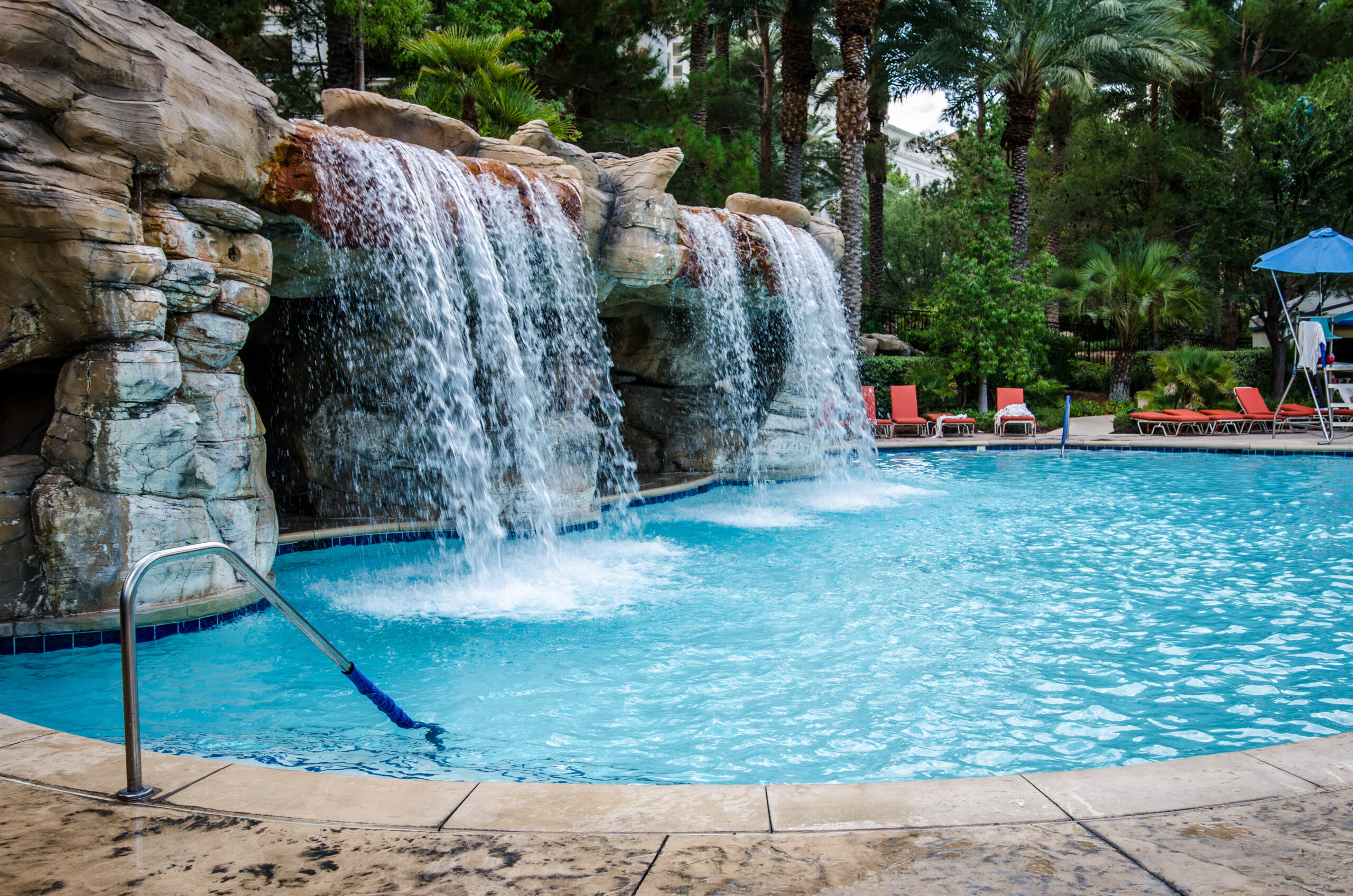
Enhancing Acoustics With Water
It’s quite impressive how effectively a well-placed fountain or waterfall can enhance the acoustics of a space, making it feel more tranquil and serene. Acoustic simulations can help you visualize this effect before implementing it in your design. These advanced tools allow you to hear how water sounds in different parts of your pool area, ensuring that you’re creating an environment with perfect harmony.
Soundproofing methods also play a crucial role. You don’t want external noise to disturb your peaceful oasis, do you? Implementing effective soundproofing can isolate your space from unwanted sounds, allowing the soothing hum of water to dominate.
Designing Pool Soundscapes
Crafting a tranquil atmosphere involves more than just aesthetics; it’s about creating the perfect soundscape as well. When designing your pool, you can’t ignore swimming acoustics. The gentle lull of water can be calming, but improper design could lead to loud echoes instead.
Consider soundproofing solutions for your pool area. They’re not only for indoor spaces; they can enhance outdoor environments too. Look into barriers and absorptive materials that reduce noise levels. You’ll want to control both the cost and the reflections of sound waves in your space.
Essential Factors Influencing Water Sounds in Pools
You’re about to dive into an engaging discussion on essential factors that influence water sounds in pools.
From exploring how the size of a pool can impact its acoustics, to unraveling the noise factors associated with waterfalls, and understanding the role materials play in shaping acoustic effects – there’s a lot you’ll discover.
Pool Size Impact
Pool size certainly impacts the acoustics, as larger bodies of water will produce deeper, more resonant sounds. Imagine this: the soft echo of a droplet falling into a vast Olympic pool. The hollow resonance of an adult’s dive in a deep backyard pool. The crisp clarity of children’s laughter around a small kiddie pool. The abrupt splash and quick silence in a narrow lap pool.
Each scenario paints vivid acoustic reflections unique to the size of the pool. But remember, noise cancellation is also important for maintaining tranquility around your water oasis. You’re not just creating visual delight with your pool design; you’re orchestrating an auditory experience that complements it perfectly.
Waterfall Noise Factors
When considering a waterfall for your oasis, it’s crucial to understand the factors that can affect its noise level. Noise reduction strategies can be helpful, but understanding the basics is key.
Factors like waterfall positioning impact and water flow velocity play significant roles in controlling sound levels. Use this simple table to guide you:
| Factor | Effect | Strategy |
| Positioning | Closer waterfalls are louder | Place it away from gathering spots |
| Water Flow Speed | Faster flow equals more noise | Adjust pump speed for quieter operation |
| Waterfall Height | Higher falls create louder splashes | Design lower falls or use diffusing rocks |
Materials’ Acoustic Effects
It’s also important to consider the acoustic effects of different materials used in your waterfall construction, as they can greatly influence the overall noise level. Different materials have varying degrees of noise damping capabilities, with some being more effective than others. When you’re choosing materials for your design, it’s crucial to keep acoustic regulations in mind.
Consider using materials like stone or concrete that naturally dampen sound and create a soothing ambiance instead of a noisy distraction. However, don’t forget that these choices should also align with the aesthetic appeal you’re aiming for. Don’t solely focus on achieving noise reduction; remember to strike a balance between functionality and aesthetics.
After all, creating an enjoyable and serene pool environment is about mastering both visual and acoustic design elements.
Techniques to Control Water Noise in Pool Design
You’re probably wondering how to control water noise in your pool design, aren’t you? The good news is that with the right soundproofing strategies and decibel level management techniques, it’s possible to create a serene environment.
Here are two key steps:
* Soundproofing Strategies
– Choosing materials with high sound absorption capacities can significantly reduce noise transmission. Imagine relaxing by your pool without the constant echo of rushing water disrupting your peace.
– Implementing barriers or baffles within the water flow system can also help in muffling the sound. You’ll be amazed at how much quieter your backyard oasis becomes.
* Decibel Level Management
– Adjusting the speed of your pool pump can have a huge impact on the noise level. Just think about how tranquil it will be when you don’t have to shout over an obnoxiously loud pump.
– Installing silencers on noisy components might seem like a small step, but it can make all difference between a peaceful swim and a headache-inducing experience.
With these techniques, you’ll no longer just dream about having a quiet pool area-you’ll actually live it! So why wait? Start implementing these tips today.
The Impact of Pool Shape and Size on Sound
Believe it or not, the shape and size of your swimming area can greatly influence noise levels. With more surface area exposed, larger pools amplify sound reflections significantly. But don’t worry – you’ve got options to manage this.

Curved walls or irregular shapes help break up sound waves, reducing echo. In contrast, square or rectangular designs tend to foster these reflections because sound bounces off straight lines more predictably. So, if you’re after a quieter pool experience, consider opting for an unconventional shape.
Size also plays a part in noise control due to the volume of water involved. Smaller bodies of water produce less noise when disturbed compared to their larger counterparts.
Finally, it’s essential to be mindful of noise regulations in your area as they may dictate limitations on pool design and operation times. Even if you’re okay with a bit of splashy symphony during your swim sessions, your neighbors might not share the sentiment!
So remember: when designing your pool area from an acoustics standpoint – consider both size and shape carefully as they play crucial roles in managing sound reflections and adhering to local noise regulations.
Material Choices and Their Effect on Pool Acoustics
Don’t overlook the importance of your material choices, as they can also affect the level of noise in your swimming area. The right materials can enhance both acoustic insulation and underwater sound systems.
When it comes to flooring, concrete is a popular choice due to its durability but it’s not the best for reducing echo. On the other hand, wooden floors can dampen sounds but may not be ideal for wet areas. Acoustic underlays installed beneath floor surfaces offer another layer of noise reduction.
The table below outlines some common pool materials and their impact on acoustics:
| Material | Acoustic Insulation | Suitability for Underwater Sound Systems |
| Concrete | Poor | Good |
| Wood | Excellent | Poor |
| Acoustic Underlay | Good | Moderate |
For walls, tiles are easy to clean but reflective surfaces increase sound levels. Textured or perforated panels help absorb sound waves.
Case Study: Acoustic Considerations in Luxury Pool Design
After delving into how different material choices can influence the acoustics of your pool, you’re now better equipped to understand the complexities of sound management in aquatic environments. But let’s take things up a notch.
It’s time to focus on acoustic challenges within the realm of luxury pools.
Picture this: you’ve invested heavily in a high-end pool, an oasis meant for relaxation and entertainment, yet it’s far from peaceful. The sound of water splashing against hard surfaces creates an echo that disrupts the tranquility you crave. This is one of many acoustic challenges faced during luxury pool design.
You might wonder why these problems are more prominent with luxury pools? Well, they usually involve complex shapes, multiple water features like fountains or cascades, and sometimes even indoor settings – all factors contributing to tricky acoustics.
To tackle these issues head-on, designers need to meticulously consider every aspect: materials used (as we learned earlier), placement of water features, pool shape and size etc., ensuring not only visual appeal but also acoustic comfort.
So remember, when designing your dream luxury pool, don’t overlook the importance of sound. Because a well-designed soundscape can enhance your enjoyment just as much as a stunning visual design.
Innovative Trends in Acoustic Pool Design
You’re probably curious about the latest trends in creating a serene and pleasant atmosphere around your luxury oasis, aren’t you?
Well, it’s time to reveal some of the cutting-edge innovations that are transforming acoustic pool design.
1. Acoustic technology advancements: The industry is leveraging advanced tech to enhance the tranquil ambiance around pools. This involves using sophisticated sound systems that mimic soothing natural sounds like waterfalls or raindrops, making your swim even more relaxing.
2. Soundproof pool enclosures: These structures are being designed with soundproof materials to create a peaceful sanctuary where external noise is kept at bay while enhancing acoustics within.
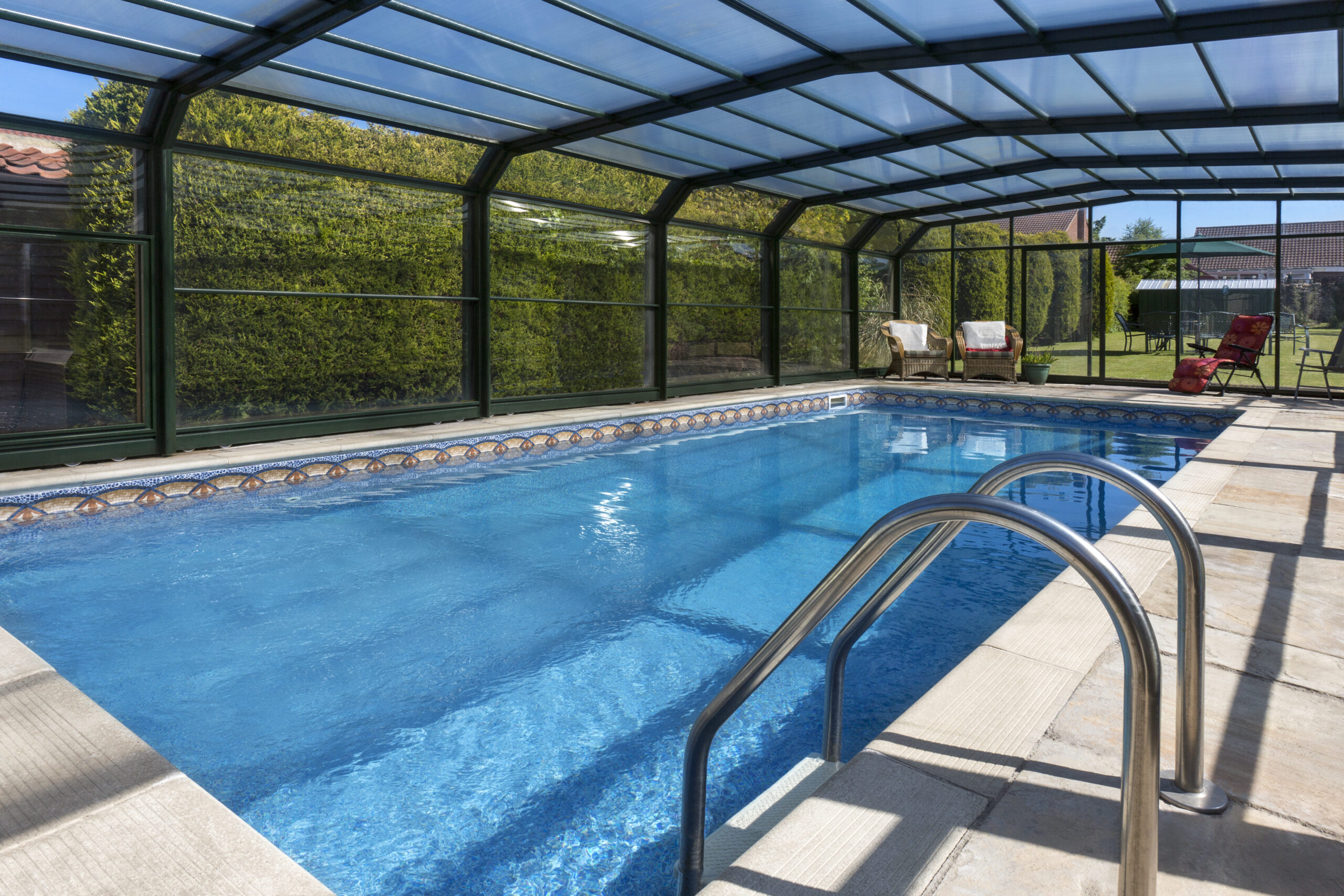
3. Water flow modulation: Designers are now able to adjust the level of water flow noise through innovative plumbing solutions and pump control technologies.
These trends aim not only at achieving aesthetic appeal but also constructing an environment conducive for relaxation and rejuvenation.
So the next time you’re planning on a pool upgrade or installation, remember: Acoustic technology advancements and soundproof pool enclosures can significantly boost your luxurious retreat’s overall ambiance!
How to Design a Pool for Optimal Acoustic Experience
Now that we’ve explored the innovative trends in acoustic pool design, let’s delve into how you can design your own pool for an optimal acoustic experience. Your choice of acoustic equipment and music are key considerations when it comes to creating a serene or lively atmosphere by your poolside.
When considering Acoustic Equipment Choices, take note of three main factors: location, durability, and quality. These aspects will greatly influence the overall sound quality and longevity of your setup.
| Factor | Description | Importance |
| Location | Outdoor audio equipment should be positioned to optimize sound distribution.| This ensures everyone at the poolside gets an even listening experience.
| Durability| Given exposure to elements like water and sunlight, outdoor audio systems must be robust.| This guarantees that they’ll stand up to weather conditions while delivering great sound.
| Quality | High-quality speakers deliver crisp clear sounds.| The better the speaker quality, the more enjoyable your Poolside Music Considerations will be.
Frequently Asked Questions
How Does Water Temperature Affect the Acoustics in a Swimming Pool?
You’re questioning how water temperature impacts acoustics in a swimming pool. Warmer water absorbs sound more, altering the sound’s quality. Thus, you’ll notice different sounds at varying temperatures due to this absorption change.
What Are Some Common Mistakes in Pool Design That Can Lead to Poor Acoustics?
Common mistakes you might make in pool design that lead to poor acoustics include choosing materials with adverse impacts on sound and neglecting the importance of proper acoustic treatments in your design process.
How Does the Depth of the Pool Influence the Sound of Water?
When you’re designing a pool, depth affects the sound of water. Deeper pools can amplify sound reflection. The pool materials also play a role, as they can either absorb or reflect the sounds produced.
Can the Type of Pool Filter Installed Impact the Overall Sound in a Pool Area?
Yes, the type of pool filter can impact the overall sound in a pool area. Proper filter maintenance helps in noise reduction. A well-maintained, high-quality filter often operates more quietly than its neglected counterparts.
Are There Specific Acoustics Considerations for Indoor Pools Versus Outdoor Pools?
Yes, indoor pools require serious echo management. Material influence is significant here; reflective materials like tile intensify sound. Outdoor pools don’t have this issue due to open space diffusing the sound naturally.

